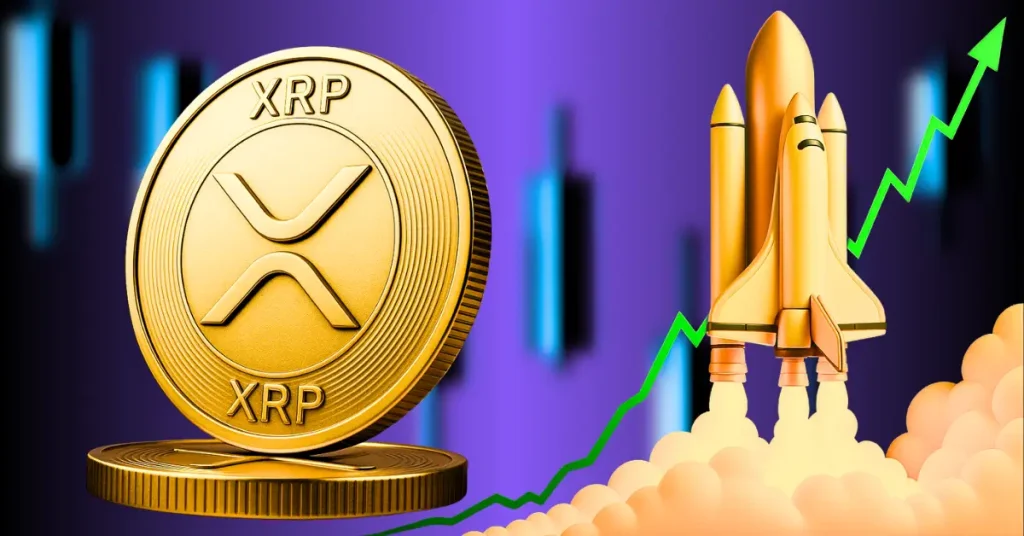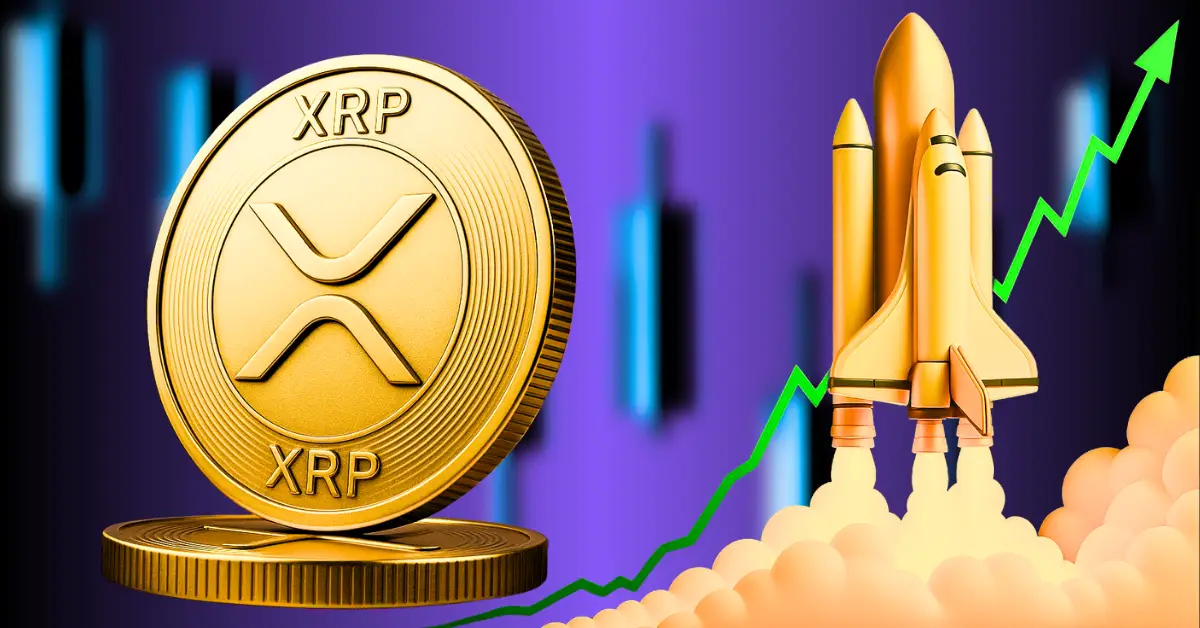
The Rise of XRP: An Analysis of Teucrium’s Bold Bet
Introduction: A New Chapter in Cryptocurrency
The cryptocurrency landscape is in a constant state of flux, with innovations and disruptions occurring at an unprecedented pace. Among the myriad of digital assets, XRP, the cryptocurrency developed by Ripple Labs, has recently captured significant attention. This surge in interest is largely attributed to Teucrium Trading’s launch of a 2x Leveraged XRP ETF (XXRP). This move, championed by Teucrium CEO Sal Gilbertie, has ignited a wave of discussions and speculations about XRP’s potential and the broader implications for the financial sector.
The Utility Argument: Why XRP Stands Out
Sal Gilbertie’s assertion that XRP possesses “the most utility” among cryptocurrencies is a pivotal point in understanding Teucrium’s strategic decision. This claim directly challenges the conventional narrative that often positions Bitcoin as the dominant force in the crypto space, primarily as a store of value. Gilbertie, however, differentiates XRP by emphasizing its practical applications and its potential to revolutionize the financial sector.
Defining Utility in the Cryptocurrency Context
Utility, in this context, refers to the real-world applications and functionalities that a cryptocurrency offers beyond simply being a digital store of value. XRP’s utility stems from its design as a fast, low-cost payment settlement system, particularly suited for cross-border transactions. Ripple’s technology facilitates near-instantaneous and inexpensive transfers compared to traditional banking systems. This capability positions XRP as a critical component in the future of financial infrastructure.
Ripple’s Technology: A Game Changer
Ripple’s technology is built on a distributed ledger that enables secure and efficient transactions. Unlike Bitcoin, which relies on a proof-of-work consensus mechanism, XRP uses a unique consensus algorithm that allows for faster and more energy-efficient transactions. This technological advantage is a significant factor in Gilbertie’s bullish stance on XRP.
Professionalism and Regulatory Compliance
Gilbertie has also emphasized the professionalism of the Ripple Labs team as a contributing factor to Teucrium’s confidence in XRP. This speaks to the importance of regulatory compliance and responsible development in the cryptocurrency industry, factors that can significantly impact the long-term viability of a digital asset.
The Leveraged ETF: A Bold Move
Teucrium’s launch of the 2x Leveraged XRP ETF (XXRP) is a significant event in the cryptocurrency market. This ETF allows investors to gain twice the daily exposure to XRP, amplifying both potential gains and losses. While leveraged ETFs are inherently riskier than traditional ETFs, they also offer the potential for higher returns, attracting a specific segment of investors with a higher risk tolerance.
The Success of the XXRP ETF
The launch of the XXRP ETF was met with considerable success, generating $5 million in trading volume on its debut, a figure that placed it among the top ETF product introductions. Gilbertie himself described the launch as “terrific” and “overwhelming,” indicating strong investor interest in XRP and a validation of Teucrium’s decision. He even stated that the leveraged XRP ETF was the firm’s most successful launch to date, a testament to the demand for this particular product.
Market Conditions and Investor Sentiment
This success is particularly noteworthy considering the prevailing market conditions. At the time of the launch, the cryptocurrency market was experiencing bearish trends, making Teucrium’s achievement even more impressive. It suggests that despite market volatility, there is a dedicated group of investors who believe in XRP’s long-term potential.
Regulatory Landscape: Navigating the SEC’s Stance
The development and launch of cryptocurrency ETFs are heavily influenced by regulatory oversight, particularly from the Securities and Exchange Commission (SEC) in the United States. Sal Gilbertie has been outspoken about the SEC’s evolving stance on cryptocurrency ETFs, particularly under the leadership of Chairman Gary Gensler.
Initial Hesitation and Regulatory Hurdles
Gilbertie revealed that the SEC had initially expressed hesitation towards cryptocurrency ETFs, even asking Teucrium and other firms to withdraw their filings, citing concerns about low liquidity in the futures market. This highlights the regulatory hurdles that cryptocurrency-related investment products face, as regulators grapple with the complexities and risks associated with this emerging asset class.
A Shift in Regulatory Sentiment
However, Gilbertie also noted a shift in the SEC’s approach, suggesting a potential U-turn in their stance. This change in regulatory sentiment could pave the way for the approval of spot crypto ETFs, which would directly hold the underlying cryptocurrency rather than futures contracts. Such a development would be a significant milestone for the cryptocurrency industry, potentially attracting even greater institutional investment.
XRP vs. Bitcoin: A Paradigm Shift
Gilbertie’s assertion that XRP possesses greater utility than Bitcoin directly challenges the long-held view of Bitcoin as the king of cryptocurrencies. While Bitcoin has established itself as a store of value, often compared to gold, its use as a medium of exchange has been limited by its transaction speed and cost.
The Role of Bitcoin in the Cryptocurrency Ecosystem
Bitcoin’s primary role as a store of value is well-established, and it continues to be seen as “digital gold.” However, its limitations as a medium of exchange have become increasingly apparent. The high transaction fees and slow processing times make it less suitable for everyday transactions.
XRP’s Advantages in Payments and Transactions
XRP, on the other hand, is specifically designed for payments and cross-border transactions. Its speed and low cost make it a potentially viable alternative to traditional banking systems, which can be slow and expensive. This focus on utility is what sets XRP apart, according to Gilbertie, and positions it for significant growth in the future.
Coexistence and Complementary Roles
This is not to say that Bitcoin and XRP are mutually exclusive. They can coexist and serve different purposes within the cryptocurrency ecosystem. Bitcoin can continue to function as a store of value, while XRP can facilitate efficient and cost-effective payments.
The Tokenization Trend: XRP’s Role in the Future
Teucrium’s bet on XRP reflects a broader trend towards the tokenization of assets in the financial sector. Tokenization involves representing real-world assets, such as stocks, bonds, or commodities, as digital tokens on a blockchain. This can streamline processes, reduce costs, and increase transparency in financial markets.
XRP’s Potential in Tokenization
XRP, with its focus on payments and its underlying blockchain technology, is well-positioned to play a role in this tokenization revolution. Its ability to facilitate fast and low-cost transactions makes it an attractive platform for transferring tokenized assets.
Gilbertie’s Vision for XRP’s Growth
Gilbertie sees this potential as a key driver of XRP’s future growth. As the financial sector increasingly embraces tokenization, the demand for XRP could surge, further validating Teucrium’s investment.
The XRP ETF Landscape: Potential for Expansion
While Teucrium’s XXRP ETF is currently a unique offering, the success of its launch suggests that there is a demand for XRP-related investment products. As the cryptocurrency market matures and regulatory clarity increases, the XRP ETF landscape could expand significantly.
Bloomberg’s Perspective on the XXRP ETF
Bloomberg ETF analyst Eric Balchunas has noted the strong debut of Teucrium’s XRP ETF, further highlighting the potential for growth in this area. If the SEC approves spot crypto ETFs, XRP could emerge as one of the leading contenders for inclusion in these products.
Attracting Institutional Investors
The increased accessibility and exposure that ETFs provide could attract a wider range of investors to XRP, including institutional players who may have been hesitant to invest directly in the cryptocurrency. This influx of capital could further drive up the price of XRP and solidify its position in the market.
Conclusion: A Calculated Risk with Potential Rewards
Teucrium’s decision to launch a 2x Leveraged XRP ETF is a bold move that reflects a strong belief in XRP’s utility and potential. Sal Gilbertie’s vocal advocacy for XRP has helped to raise awareness of its unique capabilities and its potential to revolutionize the financial sector. While the cryptocurrency market is inherently volatile and leveraged ETFs carry significant risks, Teucrium’s bet on XRP could yield substantial rewards if Gilbertie’s vision of XRP as a critical component of future financial infrastructure comes to fruition. The market’s response will continue to unfold, but one thing is clear: Teucrium has placed its chips on XRP, and the world is watching.





